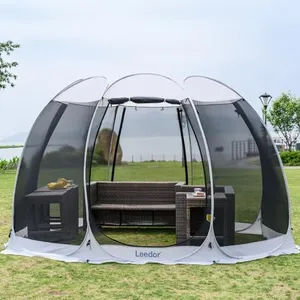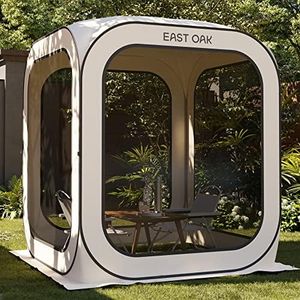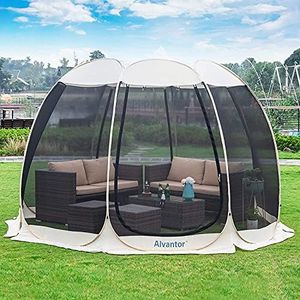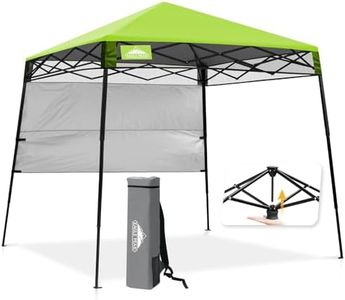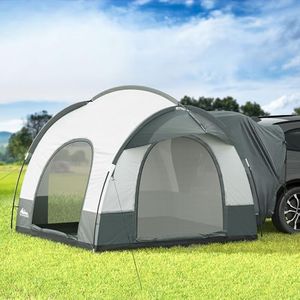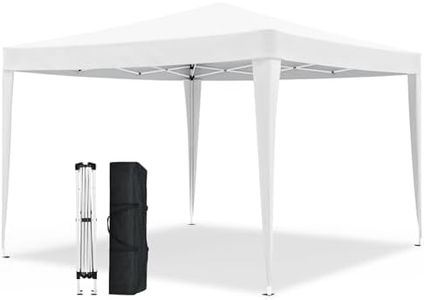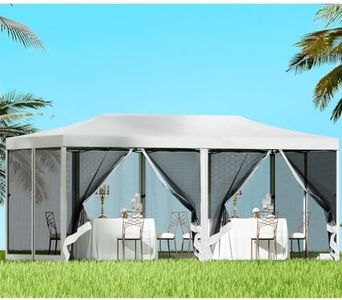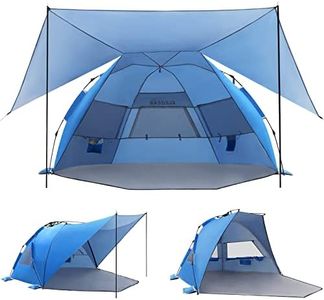We Use CookiesWe use cookies to enhance the security, performance,
functionality and for analytical and promotional activities. By continuing to browse this site you
are agreeing to our privacy policy
10 Best Pop Up Canopy Tents
From leading brands and best sellers available on the web.Buying Guide for the Best Pop Up Canopy Tents
When choosing a pop-up canopy tent, think about where you plan to use it, how many people or items you want to cover, and how easy you want the set-up to be. Whether it's for the beach, a backyard party, or a market stall, picking the right tent means you’ll stay dry, shaded, and comfortable. Focusing on the key features below will help you find the best fit for your needs.Size (Dimensions)Size refers to the length and width of the area the canopy covers, and sometimes also the peak height. Choosing the right size is important because it determines how many people or items you can fit underneath, as well as how much ground space you need. Small canopies (like 6x6 feet) are ideal for personal shade at events or small groups. Medium sizes (around 8x8 or 10x10 feet) are great for family outings, small gatherings, or covering a stall. Large canopies (12x12 feet and above) suit big gatherings, crafts fairs, or large setups. Always think about how many people, chairs, or tables will go under the tent and measure your planned space before buying.
Frame MaterialThe frame is what holds your canopy up, and the material can affect how sturdy and heavy it is. Most frames are made from steel or aluminum. Steel frames are strong and stable, which is good if you want the tent to resist wind or be used often in one spot, but they can be heavier to move. Aluminum frames are lighter and easier to carry, making them better for portability but sometimes less robust in harsh conditions. Pick a frame material based on where you’ll use the tent most and whether you'll need to transport it often.
Canopy FabricCanopy fabric refers to the material used for the tent’s top. The quality of this material is crucial because it affects weather protection and longevity. Polyester and Oxford fabrics are commonly used. Lower-weight materials are easier to carry and set up but may be less durable and waterproof. Heavier materials tend to last longer and offer better rain and sun protection, but can add weight. If you expect to use the canopy in bright sunlight or rain, look for UV-resistant and waterproof ratings. If you just need shade now and then, basic fabrics should do.
Ease of Set-UpEase of set-up describes how quickly and simply you can put up or take down the canopy. Pop-up tents typically are designed for fast assembly, but the number of people needed and complexity can vary. Some are truly one-person set-ups, while others are easier with two or more people. Check for user-friendly features like push-button locks or clear assembly instructions. If you want minimal fuss or plan to use it alone, look for tents advertised as having ‘instant’ or ‘quick’ set-ups.
PortabilityPortability considers how easily you can carry and store the tent. This is determined by the tent's total packed size, weight, and whether it comes with a wheeled carry bag. Lightweight, compact designs are better if you’ll be loading it in your car frequently or carrying it a distance. If your tent will mostly stay in one place, portability might be less important. Think about where you’ll need to move your tent and choose accordingly.
Stability FeaturesStability features include anything that helps the tent stay upright and secure, especially in windy conditions. Look for things like stakes, weight bags, guy ropes, and reinforced frames. Those who plan to use the tent in open, breezy places should prioritize these features, while at a sheltered backyard event, basic stability may be enough. Assess your typical weather conditions and pick a canopy that matches.
Weather ResistanceWeather resistance means how well the tent protects against sun, rain, and wind. Some canopies are water-resistant, meaning they handle light rain, while others are waterproof for heavier weather. UV protection ratings help block harmful sunlight and prevent fabric fading. If you expect to use your tent in changing weather, choose a model with higher weather resistance. For fair-weather or indoor/outdoor markets, basic resistance should be suitable.

